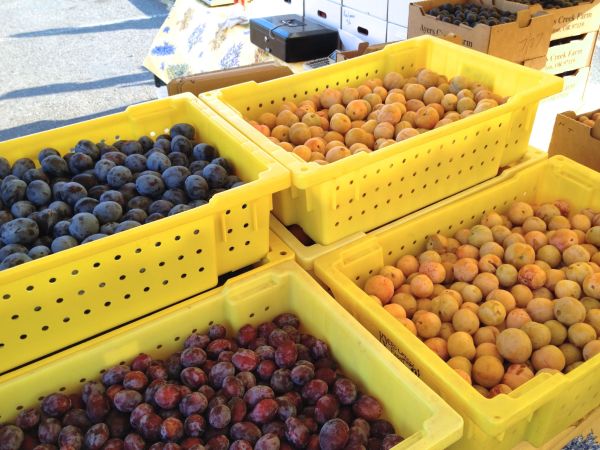Vendor Profile: Obon
Guest User
Farmers’ markets are a collection of businesses, a temporal grocery store where each shelf comes with a smiling face and a wealth of knowledge about the products they create and sell. We’re giving our vendors the spotlight to share more about their role in the Hillsdale market community.
By Sarah West

Since moving to Portland in March of 2014, Fumiko Hozumi and Jason Duffany have made quick work of finding a unique voice in Portland’s crowded food industry. The couple met in San Fransisco, where Fumiko rolled sushi at a Castro District restaurant by night while completing a vet tech certification program by day, and Jason transitioned from computer engineering to cooking when he was hired to serve as the kitchen manager and chef for the deli of a small organic grocery store in Sausalito. Tiring of the Bay Area’s rising cost of living and increasing urban density, Jason and Fumiko began looking elsewhere for a place to settle down and try their hand at food entrepreneurship. After a brief scouting trip in early 2014 to Portland’s southeast neighborhoods, they were charmed by the city’s decentralized restaurant scene.
“Our brief stay led us to discover that downtown didn't fully represent this city,” Jason explained. “By late March we had moved into a small mother-in-law unit on the east face of Mt Tabor. Shortly afterward we founded Obon and signed a lease for a commercial kitchen.”
 Menu Item #1: Kenchinjiru – A hearty stew with a ginger-flavored miso broth, seasonal root vegetables, mushrooms, and non-gmo tofu. This warming soup was a signature winter dish in Fumiko’s childhood home
Menu Item #1: Kenchinjiru – A hearty stew with a ginger-flavored miso broth, seasonal root vegetables, mushrooms, and non-gmo tofu. This warming soup was a signature winter dish in Fumiko’s childhood home
Right from the start, they noticed a lack of vegan Japanese food in Portland and designed their business model to serve that niche market. Taking cues from traditional Japanese Buddhist cuisine, Obon’s plant-based menu aims for authentic and healthful food that satisfies the adventurous tastes of eaters in a vibrant food city. At the recommendation of a friend, the couple purchased some basic equipment and applied to farmers markets. Billing Obon as a mobile food business and catering company with brick-and-mortar aspirations, they used the markets as an opportunity to practice ramping up their production capacity and introducing their unique products to a customer base already enthusiastic about fresh vegetables.
A Japanese native, Fumiko’s repertoire forms the foundation of Obon’s menu. Her recipes draw on a collection of flavors and techniques gleaned from childhood memories and dishes she and Jason discovered on visits to Japan. Tweaked and influenced by the seasonal availability of ingredients and Jason’s zest for exploring unconventional flavor combinations, Obon’s food is a playful blend of old and new.
 Menu Item #2: Giant Tater Tots – Organic russet potatoes are mashed with seasonal vegetables and coated in Tabor Bread panko, fried in palm oil, and served with house-made carrot ketchup.
Menu Item #2: Giant Tater Tots – Organic russet potatoes are mashed with seasonal vegetables and coated in Tabor Bread panko, fried in palm oil, and served with house-made carrot ketchup.
They gave Obon the tagline, “Feel good Japanese comfort food,” a phrase Jason describes as summing up what he and Fumiko appreciate about the plant-based Japanese cuisine their menu emulates.
“For us, Japanese comfort food has always been easier to digest [than its Western counterparts] & never leaves us feeling heavy or sick no matter how much we stuff our faces—which we often do.”
 Menu Item #3: Karokke – This traditional fritter made of sweet potato or winter squash, organic raisins, and Japanese curry blend is a snack Fumiko fondly recalls purchasing as a child on her way home from school. Coated in Tabor Bread panko and fried in palm oil, Obon serves their karokke drizzled with tangy house-made Tamarind sauce.
Menu Item #3: Karokke – This traditional fritter made of sweet potato or winter squash, organic raisins, and Japanese curry blend is a snack Fumiko fondly recalls purchasing as a child on her way home from school. Coated in Tabor Bread panko and fried in palm oil, Obon serves their karokke drizzled with tangy house-made Tamarind sauce.
Instead of relying on animal fats and dairy to flavor and enrich their dishes, Jason and Fumiko employ technique and the highest-quality ingredients they can source. Making connections with other farmers market vendors has been an unexpected but integral part of this process. Standing with them at their People’s Co-op Farmers Market stall on an early April Wednesday, Fumiko pointed across to the Tabor Bread booth and explained that they make all of the panko (breadcrumbs) for their tater tots and karokke from Tabor Bread loaves, a southeast Portland bakery known for its use of locally grown wheat and fermented wild yeast leavens.
“It was a game changer,” Jason added. “The flavor of those two items just got so much better.”
Another trick up their sleeve is tofu misozuke, a product they first tried at a restaurant in Onomichi, a small seaside town in Hiroshima Prefecture.
“We had it served on cucumber slices with micro-greens at an izakaya bar where we were sipping local sake. Due to its creaminess, we assumed it was a cheese product, but were corrected by one of the cooks working the front of the restaurant: It was fermented tofu, aged in miso for at least two weeks.”
 Menu Item #4: Sprouted Brown Rice Onigiri – For this gluten-free treat, sprouted brown rice is blended with Japanese-style pickled organic vegetables, and filled with Obon’s signature tofu misozuke before being shaped and nestled into an organic nori wrapper. Onigiri are a classic Japanese lunch box staple, and a vehicle for each cook to showcase her own unique style.
Menu Item #4: Sprouted Brown Rice Onigiri – For this gluten-free treat, sprouted brown rice is blended with Japanese-style pickled organic vegetables, and filled with Obon’s signature tofu misozuke before being shaped and nestled into an organic nori wrapper. Onigiri are a classic Japanese lunch box staple, and a vehicle for each cook to showcase her own unique style.
Tofu misozuke is surprisingly creamy and smooth, with a mild, nutty flavor lent from the miso it ferments in and a brie-like richness that fills your mouth as fully as triple-cream cheese. After returning from their trip, Fumiko and Jason were determined to create their own.
"We found out about Rau Om, a company started by a couple in the Bay Area who had become just as intrigued as we had after their first taste of misozuke. When they stopped producing it commercially they posted their recipe online. We've combined some of their techniques with what we found in The Book of Miso, plus what we learned initially in Onomichi,” Jason told me, adding: “We eat it almost daily as a condiment for just about anything. At farmers markets, we serve it smoked inside our sprouted brown rice onigiri.”
Obon produces small batches of misozuke packaged for retail that are available for purchase at People’s Food Co-op and Food Front’s NW Thurman Street location. As its popularity grows, they hope to expand the product line with flavored misozuke spreads.
With their sharp curiosity and dedication to authentic Japanese preparations, Obon has already developed five recipes that stretch well beyond the sushi- and ramen-dominated boxes we’ve come to expect of Japanese food in the US. More than just vegan or health food, faithful to but not restricted by tradition, Obon’s first success has been to create Obon food, a menu as undeniably their own as it is uniquely alluring.
You’ll be able to sample Obon’s meticulously crafted delicacies every Sunday at the Hillsdale Farmers Market. Stay up to date with new menu items, products, and events (including a summer 2015 farm dinner hosted by HFM’s Naked Acres Farm) by visiting www.obonpdx.com and their Facebook page (link).
This article contains several corrections to the original piece published in the email version of the Grapevine sent on April 9, 2015.

 The dynamic duo behind Kookoolan Farms, Chrissie and Koorosh Zaerpoor, met while working as program managers at Intel (Koorosh still works there). The couple married and began dreaming a world outside of Intel where they could work together on a project that integrated their engineering skills with more personal interests: Chrissie was an avid gardener and cook with a passion for home mead making, Koorosh still harbored dreams of becoming a farmer he’d hatched as a child in Iran helping out with his parents’ poultry flock.
The dynamic duo behind Kookoolan Farms, Chrissie and Koorosh Zaerpoor, met while working as program managers at Intel (Koorosh still works there). The couple married and began dreaming a world outside of Intel where they could work together on a project that integrated their engineering skills with more personal interests: Chrissie was an avid gardener and cook with a passion for home mead making, Koorosh still harbored dreams of becoming a farmer he’d hatched as a child in Iran helping out with his parents’ poultry flock. This may seem like an obvious direction for a poultry farm to grow, but the reality of achieving it was far more difficult than the Zaerpoors initially realized. Though regulations have changed somewhat since Kookoolan’s 2005 startup (especially for farmers with fewer than a thousand birds), the USDA has strict codes that make it prohibitively expensive for small producers to operate their own slaughter facility. Kookoolan persevered and became the first farm of their size in Oregon to accomplish this feat. As their processing ability increased, they realized that the five-acre plot they purchased in 2005 would not be sufficient to produce the flock sizes required to build a sustainable business.
This may seem like an obvious direction for a poultry farm to grow, but the reality of achieving it was far more difficult than the Zaerpoors initially realized. Though regulations have changed somewhat since Kookoolan’s 2005 startup (especially for farmers with fewer than a thousand birds), the USDA has strict codes that make it prohibitively expensive for small producers to operate their own slaughter facility. Kookoolan persevered and became the first farm of their size in Oregon to accomplish this feat. As their processing ability increased, they realized that the five-acre plot they purchased in 2005 would not be sufficient to produce the flock sizes required to build a sustainable business. With careful planning, Kookoolan Farms became a cooperative of ethical meat and poultry farmers, greatly expanding their product line, and distributing the labor to a network of specialists. Chrissie remains the hub of operations, coordinating the farm’s wholesale distribution, farmers market sales, and, of course, quality control. The cooperative model finally freed up some of the Zaerpoor’s time, allowing them to expand their vegetable garden into a summer CSA program and giving Chrissie time to get back into mead.
With careful planning, Kookoolan Farms became a cooperative of ethical meat and poultry farmers, greatly expanding their product line, and distributing the labor to a network of specialists. Chrissie remains the hub of operations, coordinating the farm’s wholesale distribution, farmers market sales, and, of course, quality control. The cooperative model finally freed up some of the Zaerpoor’s time, allowing them to expand their vegetable garden into a summer CSA program and giving Chrissie time to get back into mead. The original Kookoolan Farm site still houses a portion of the farm’s pastured chickens, their poultry processing facility, a serve-yourself farm store, the vegetable rows, a small plot of pinot noir grapes, and the new Mead Superstore.Visitors are welcome on weekends (or during the week, by appointment) to browse their selection of over 150 different meads and taste Kookoolan’s own farm-made Elegance Mead, kombucha, and Vin de Noix. What about those pinot noir grapes? Well, they may just show up in the Kookoolan lineup soon in the form of a pinot-mead blend known as pyment.
The original Kookoolan Farm site still houses a portion of the farm’s pastured chickens, their poultry processing facility, a serve-yourself farm store, the vegetable rows, a small plot of pinot noir grapes, and the new Mead Superstore.Visitors are welcome on weekends (or during the week, by appointment) to browse their selection of over 150 different meads and taste Kookoolan’s own farm-made Elegance Mead, kombucha, and Vin de Noix. What about those pinot noir grapes? Well, they may just show up in the Kookoolan lineup soon in the form of a pinot-mead blend known as pyment.
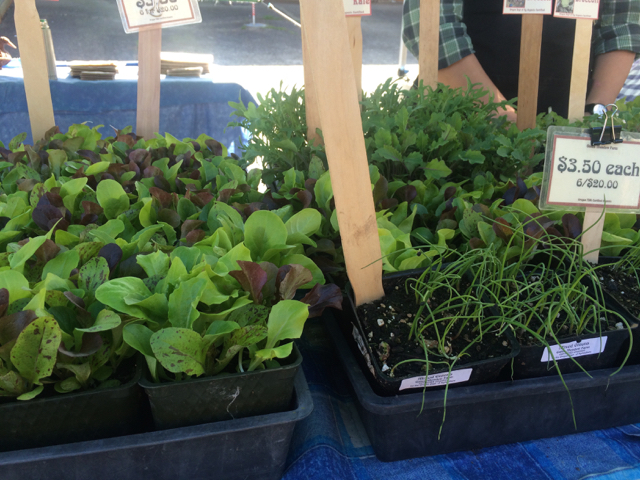
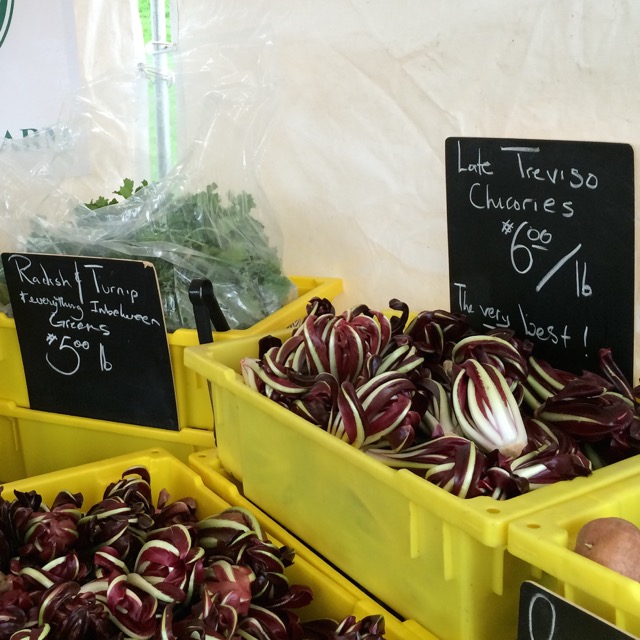
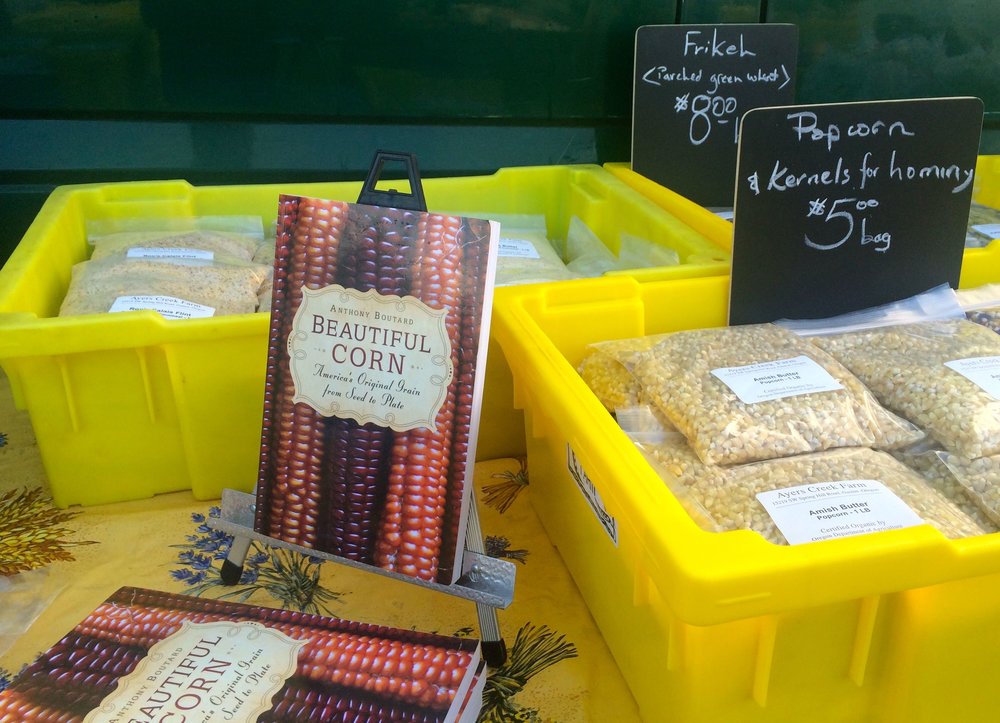
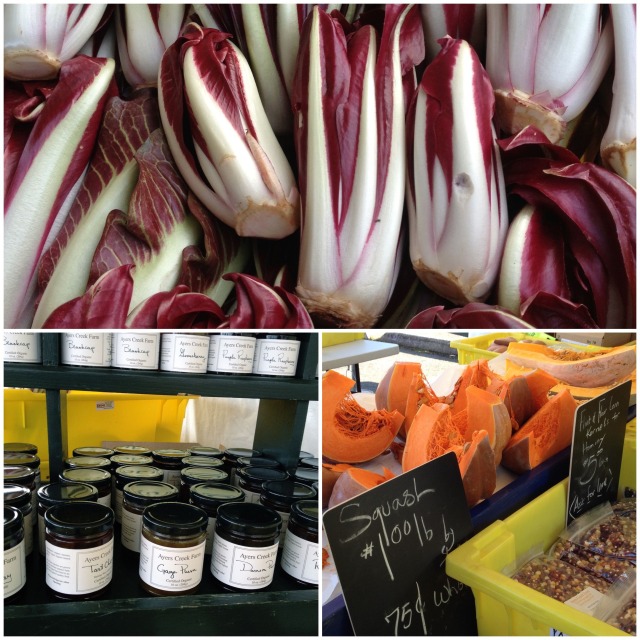
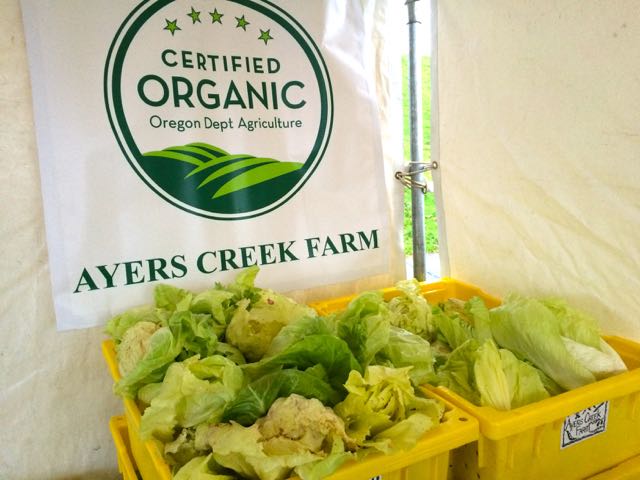
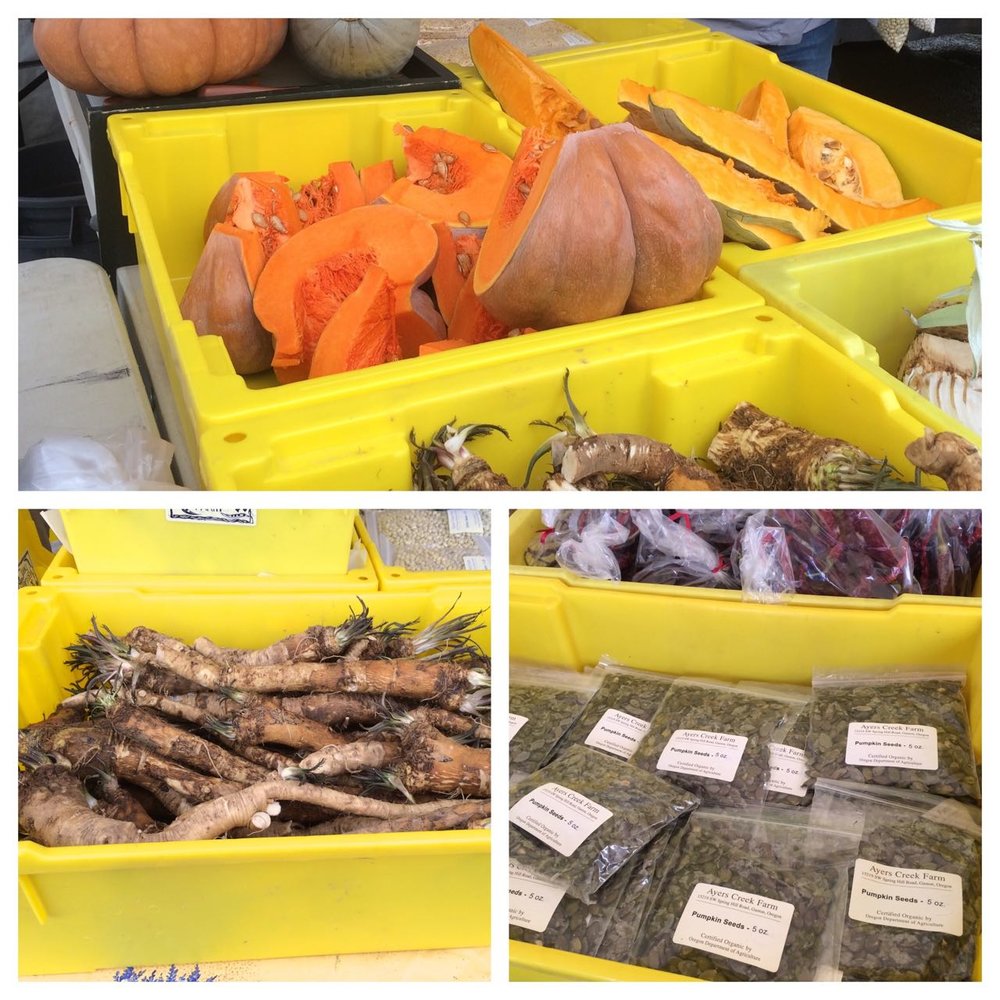
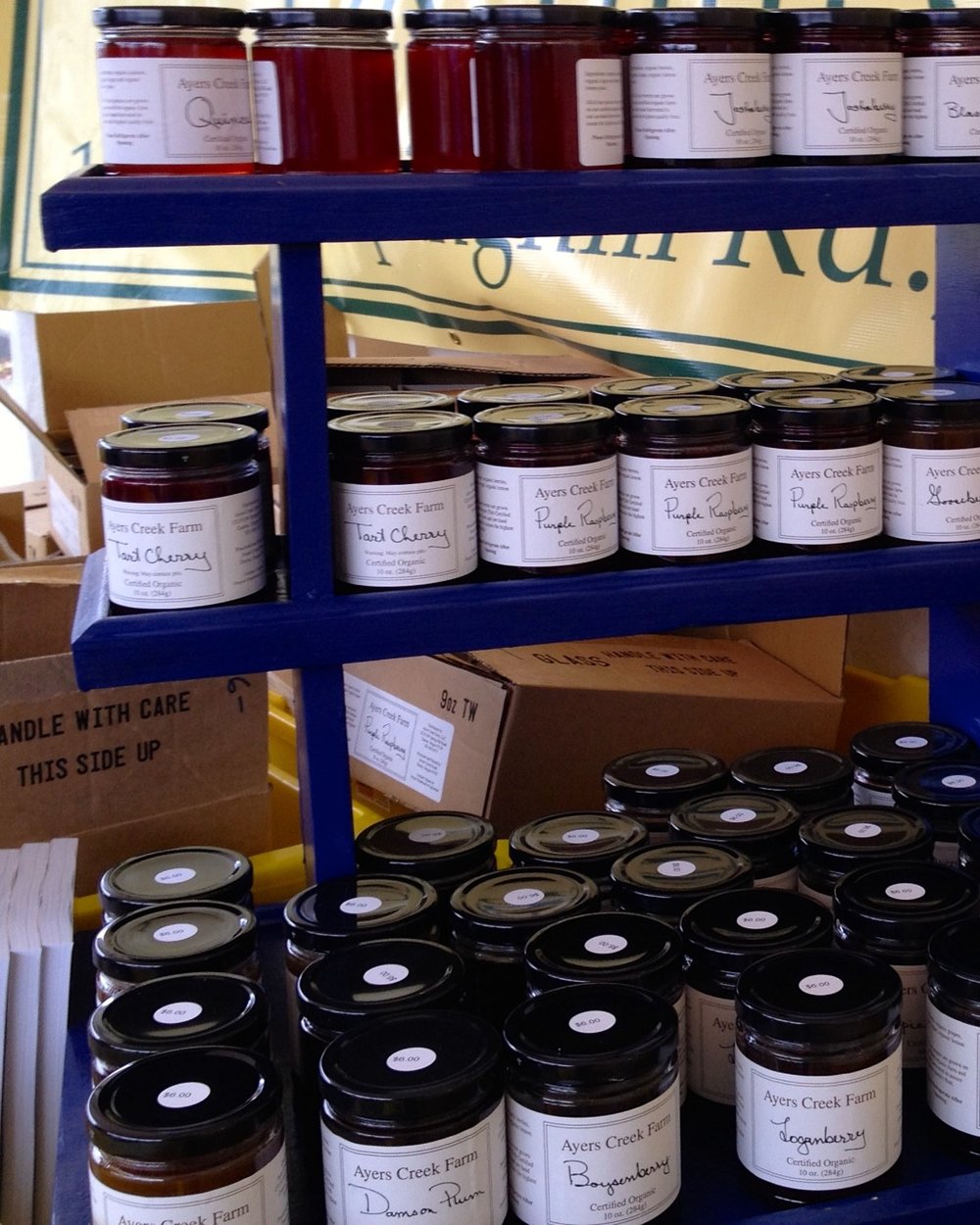

 As a word, celery is delightful: smooth, translucent, bright, like the ample water its juicy bite unleashes. In today’s kitchens, celery is best known for its fibrous, overgrown stems, sliced into stock or slathered with peanut butter to mellow their robust flavor. In celery’s culinary history, those juicy, blanched stalks are an anomaly. Nearly every other part of the plant was used as medicine and (less commonly) food for thousands of years before the proverbial ants took a seat on the log and we shelved all but an inkling of celery.
As a word, celery is delightful: smooth, translucent, bright, like the ample water its juicy bite unleashes. In today’s kitchens, celery is best known for its fibrous, overgrown stems, sliced into stock or slathered with peanut butter to mellow their robust flavor. In celery’s culinary history, those juicy, blanched stalks are an anomaly. Nearly every other part of the plant was used as medicine and (less commonly) food for thousands of years before the proverbial ants took a seat on the log and we shelved all but an inkling of celery.
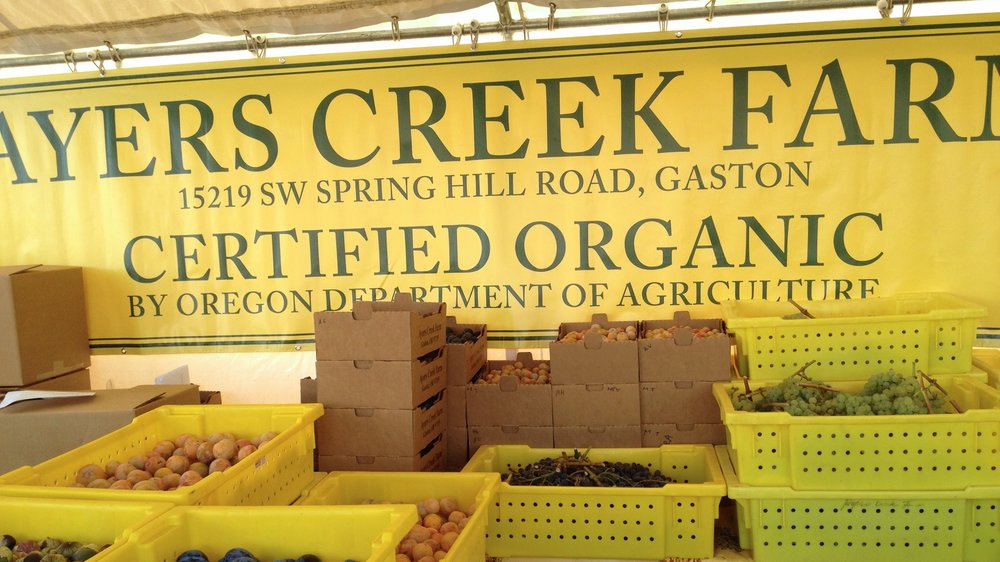



 As farmers’ market shoppers, we’ve come to know many of our foods by name. Gone are the days when a tomato was just a tomato; now we want Brandywine, Purple Calabash, Oregon Star. Anonymous berries just won’t do anymore and we wait in line for Chesters, Triple Crowns, or Hoods. We make the effort to remember these names because we remember the flavors that come with them.
As farmers’ market shoppers, we’ve come to know many of our foods by name. Gone are the days when a tomato was just a tomato; now we want Brandywine, Purple Calabash, Oregon Star. Anonymous berries just won’t do anymore and we wait in line for Chesters, Triple Crowns, or Hoods. We make the effort to remember these names because we remember the flavors that come with them. has recently restarted an old tradition of public vegetable variety trials. Unlike the secretive work of seed breeders developing new (often patentable) varieties, a public trial consists of varieties already released (or near release) and its purpose is to compare attributes of similar plants. I recently attended an open field day at NWREC with a group of area growers to have a look at the crops and taste the differences. The one-acre site is planted in a patchwork of varieties and doubles as a learning garden for the center’s educational programs (including the excellent
has recently restarted an old tradition of public vegetable variety trials. Unlike the secretive work of seed breeders developing new (often patentable) varieties, a public trial consists of varieties already released (or near release) and its purpose is to compare attributes of similar plants. I recently attended an open field day at NWREC with a group of area growers to have a look at the crops and taste the differences. The one-acre site is planted in a patchwork of varieties and doubles as a learning garden for the center’s educational programs (including the excellent  This year’s trials focused primarily on the Asian specialty market, with Thai basil, leaf celery, cilantro, yu choi, and gailan. We also got to taste a selection of soon-to-be released beets from breeders at the University of Wisconsin, and still-in-development mild habaneros, a project of OSU breeder Jim Myers.
This year’s trials focused primarily on the Asian specialty market, with Thai basil, leaf celery, cilantro, yu choi, and gailan. We also got to taste a selection of soon-to-be released beets from breeders at the University of Wisconsin, and still-in-development mild habaneros, a project of OSU breeder Jim Myers.


